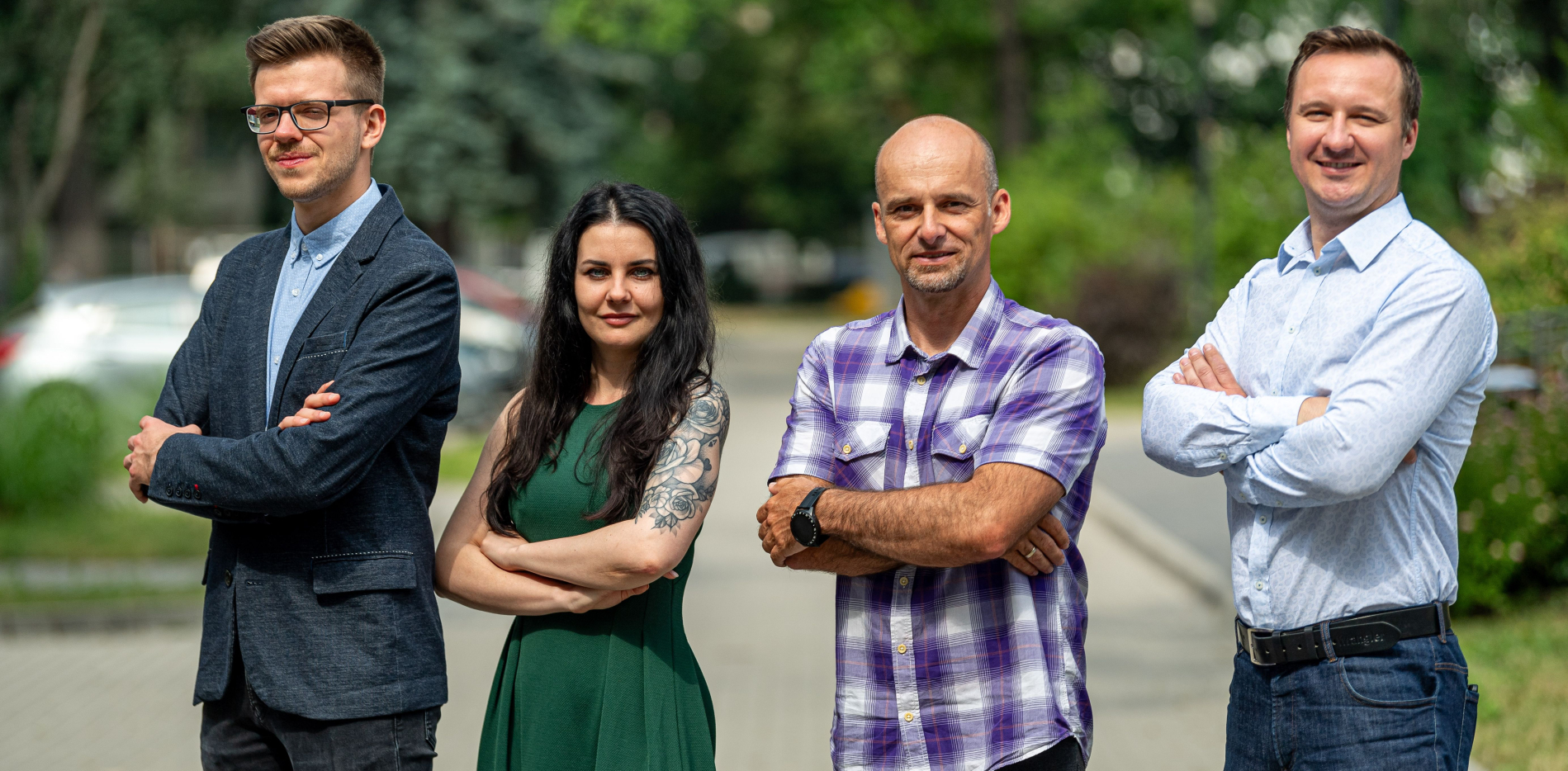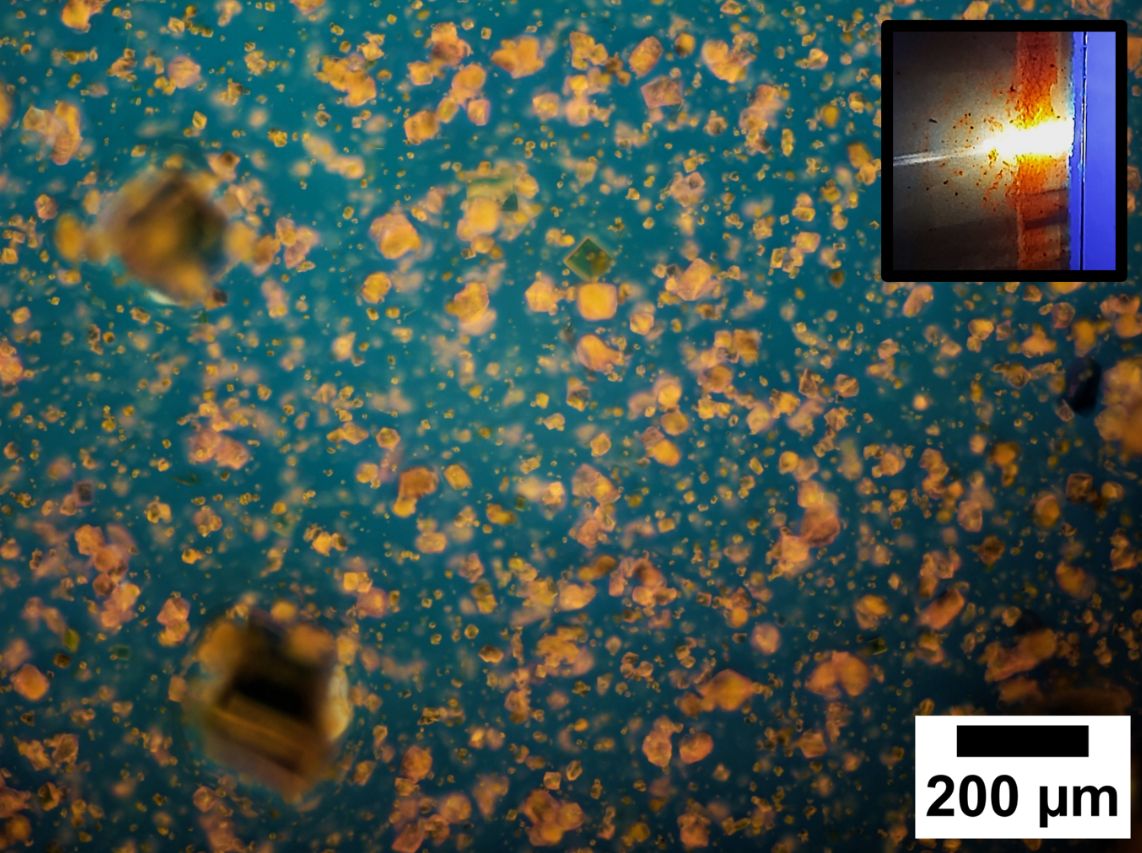YOUR BROWSER IS OUT-OF-DATE.
We have detected that you are using an outdated browser. Our service may not work properly for you. We recommend upgrading or switching to another browser.
Date: 26.07.2023 Category: general news, science/research/innovation

A team of scientists from the Faculty of Chemistry has developed an innovative technology for generating white laser light based on just two organic dyes. The results of their research have just been published in “Advanced Optical Materials”, one of the top journals dedicated to materials engineering and optics.
 The article entitled “White lasing and white fluorescence in a simplified organic system using only two dyes” involved the work of Alina Szukalska, PhD, Eng., Adam Szukalski, PhD, Eng., Prof. Jarosław Myśliwiec, and Marek Adaszyński.
The article entitled “White lasing and white fluorescence in a simplified organic system using only two dyes” involved the work of Alina Szukalska, PhD, Eng., Adam Szukalski, PhD, Eng., Prof. Jarosław Myśliwiec, and Marek Adaszyński.
The generation of white laser light is a relatively new, but thriving, subject that is now being tackled by researchers around the world. Obtaining white laser light is a complicated undertaking that requires the use of several synchronised sources or multiple dyes – at least three – corresponding to the primary colours red, green, and blue (RGB).
“We decided to use unconventional solutions, i.e. instead of using three dyes, which is a classic approach, we decided to use only two. It made sense because one of them provided the necessary blue component of the emission and the other, in addition to its usual molecular form, also showed a tendency to aggregate,” says Alina Szukalska, PhD, Eng. “Importantly, it’s the aggregation that still ensures the ability to emit as well as amplify electromagnetic radiation in two different emission bands,” she adds.
The result was the emission of the colour green in the dissolved phase and orange in the crystalline phase. This fascinating phenomenon of dye aggregation opened up entirely new possibilities for our scientists. The implementation of this solution, however, was a complex exercise that required precision and an in-depth understanding of the system being developed.
 The researchers had to control many factors, such as the concentration of the laser dyes, the compatibility of all the materials, including the formation of a new phase of one of them, the properties of the organic matrices (for the white fluorescence, it was a liquid crystal while for the white laser, it was a polymer), the possibility and nature of the occurrence of energy transfer between the components, and so on.
The researchers had to control many factors, such as the concentration of the laser dyes, the compatibility of all the materials, including the formation of a new phase of one of them, the properties of the organic matrices (for the white fluorescence, it was a liquid crystal while for the white laser, it was a polymer), the possibility and nature of the occurrence of energy transfer between the components, and so on.
All this, in just one configuration of the mentioned parameters, could lead to the generation of both white fluorescence and laser action, as evidenced by its position on the so-called chromaticity triangle, which is a graphical representation of the range of all possible colours that can be observed by the human eye.
“The discovery consisting in achieving white laser light with just two dyes is groundbreaking. To our knowledge, such research results have appeared in the literature for the first time, which has also been recognised by independent experts in the field and published in a prestigious scientific journal,” emphasises Alina Szukalska, PhD, Eng. “Our experiments show that precise manipulation of dye aggregation opens up new perspectives for multicolour laser action,” she adds.
The researchers applied a liquid crystal matrix and, based on the organic nature of the optical materials introduced, used DNA material. In their paper, they demonstrate its ability to act as a biological matrix for the liquid crystalline phase, suggesting that it could be an alternative candidate for the creation of multicolour microlasers.
“This material, in addition to being useful in a variety of environmentally friendly biomedical and diagnostic applications for optoelectronics, is an interesting topic for further research,” explains Alina Szukalska, PhD, Eng.
Our site uses cookies. By continuing to browse the site you agree to our use of cookies in accordance with current browser settings. You can change at any time.